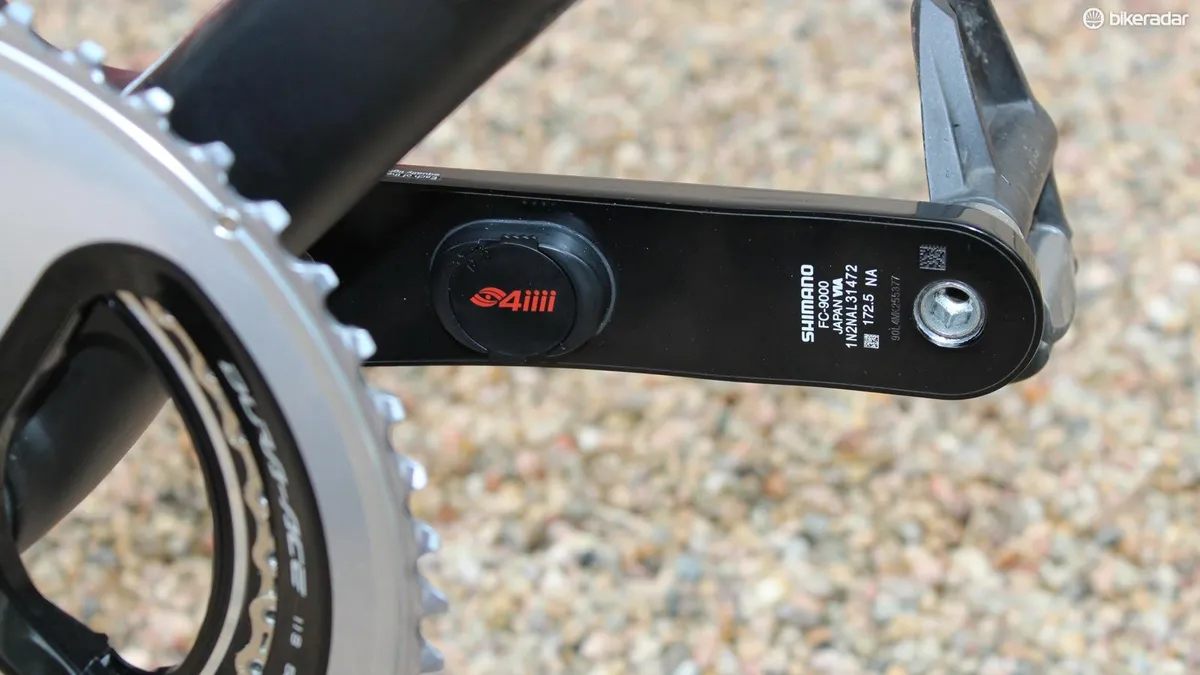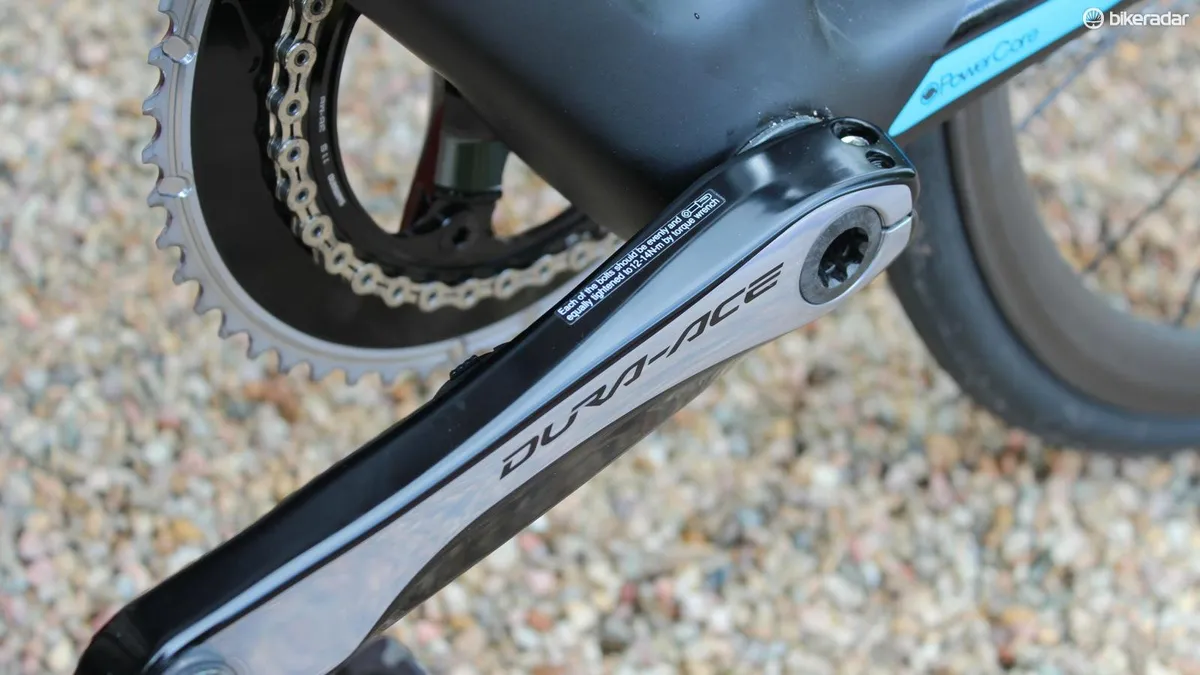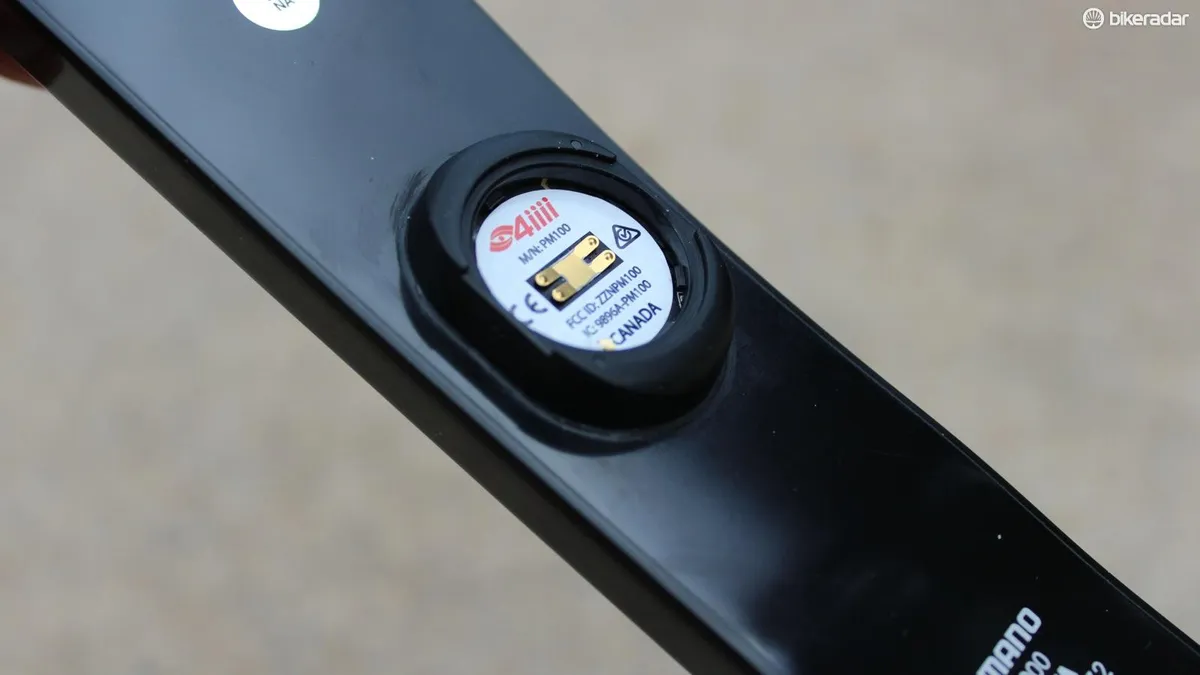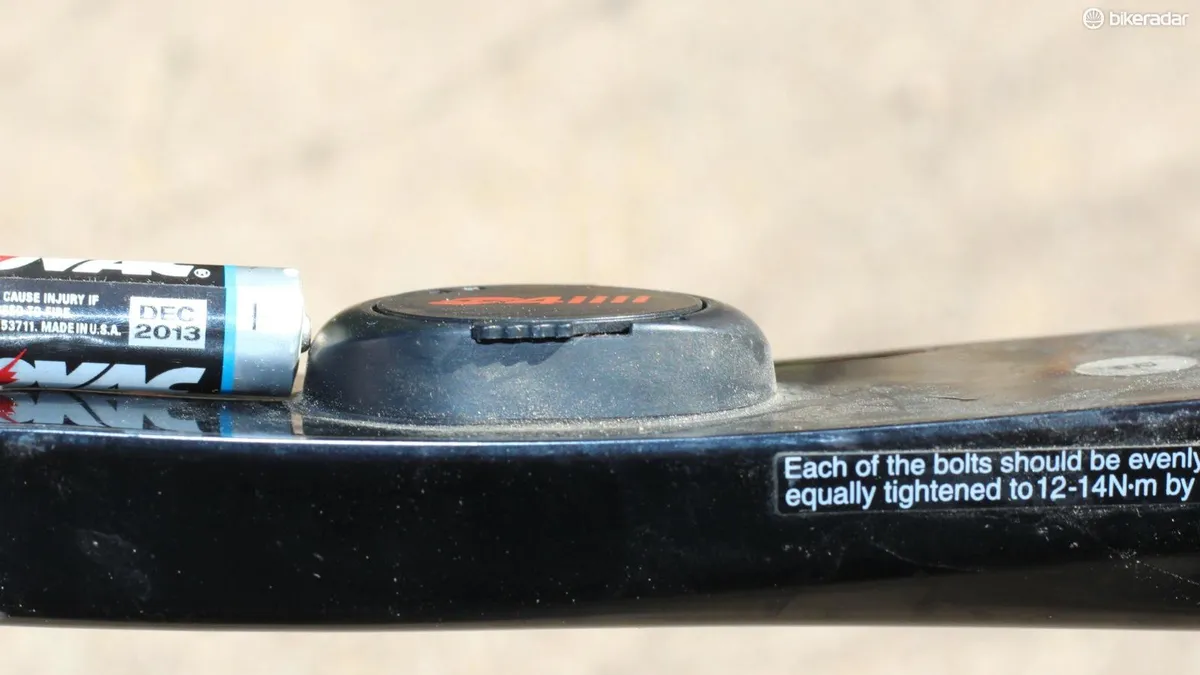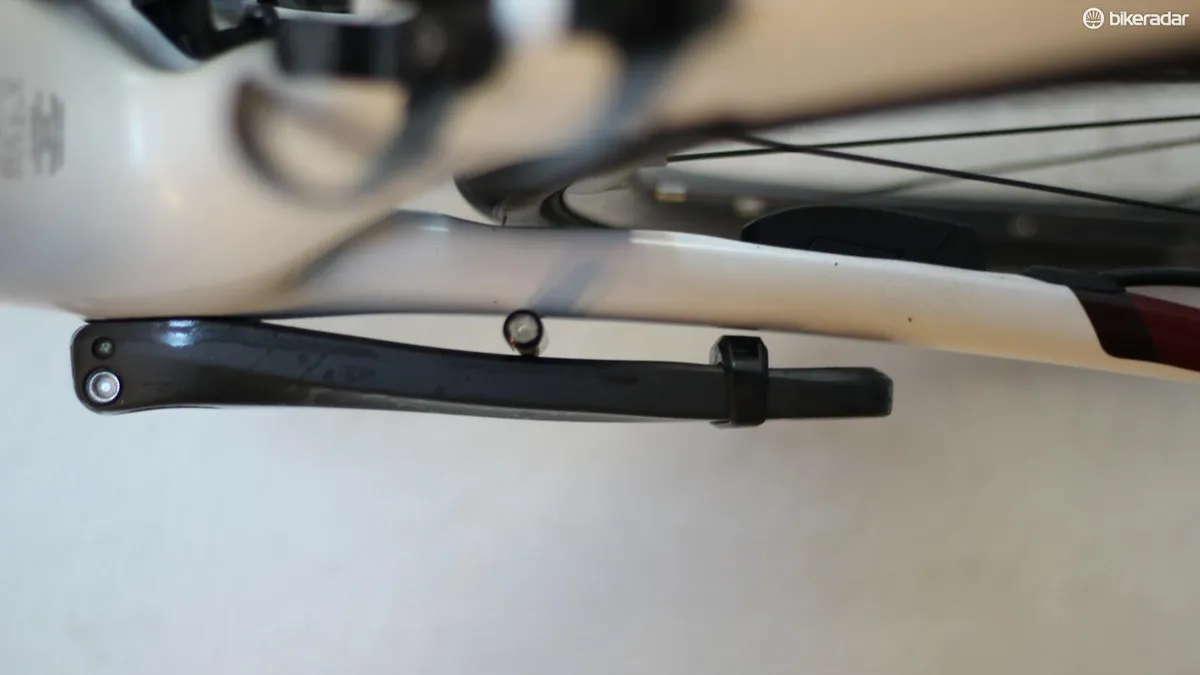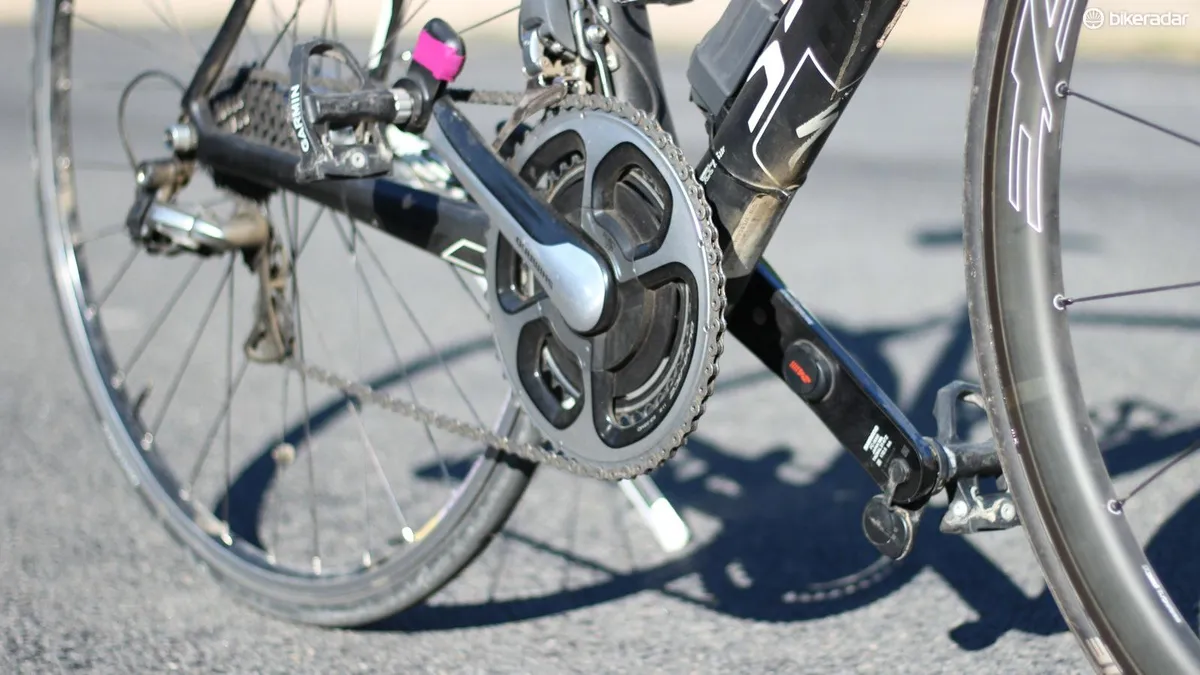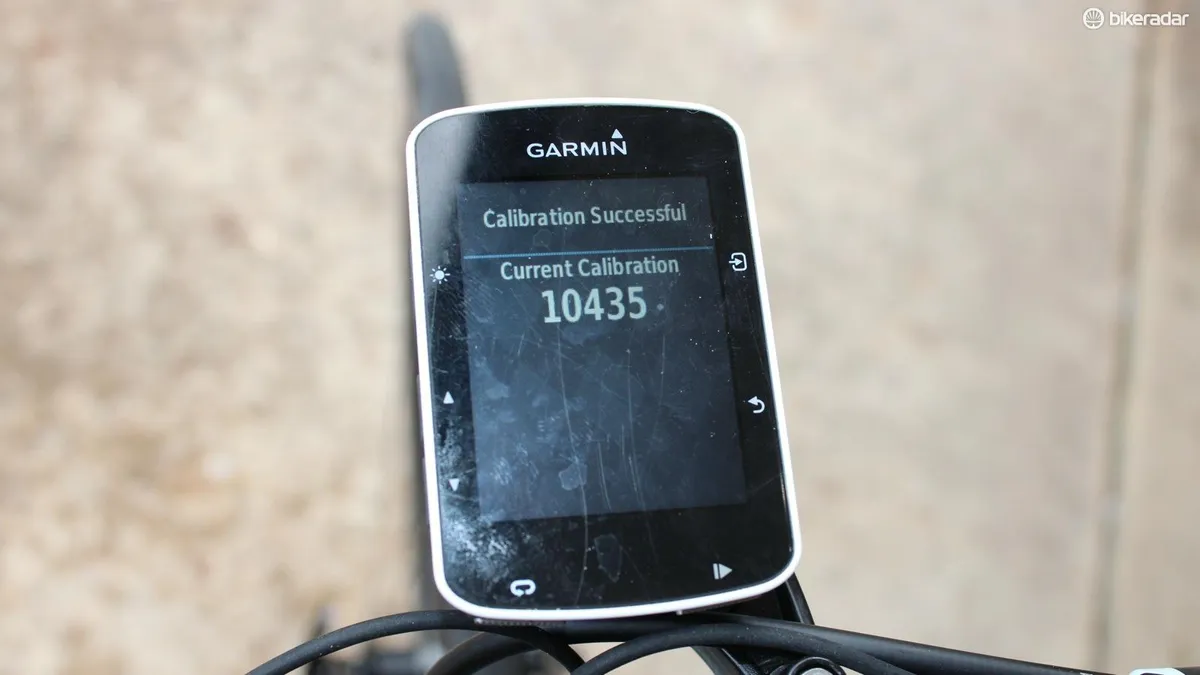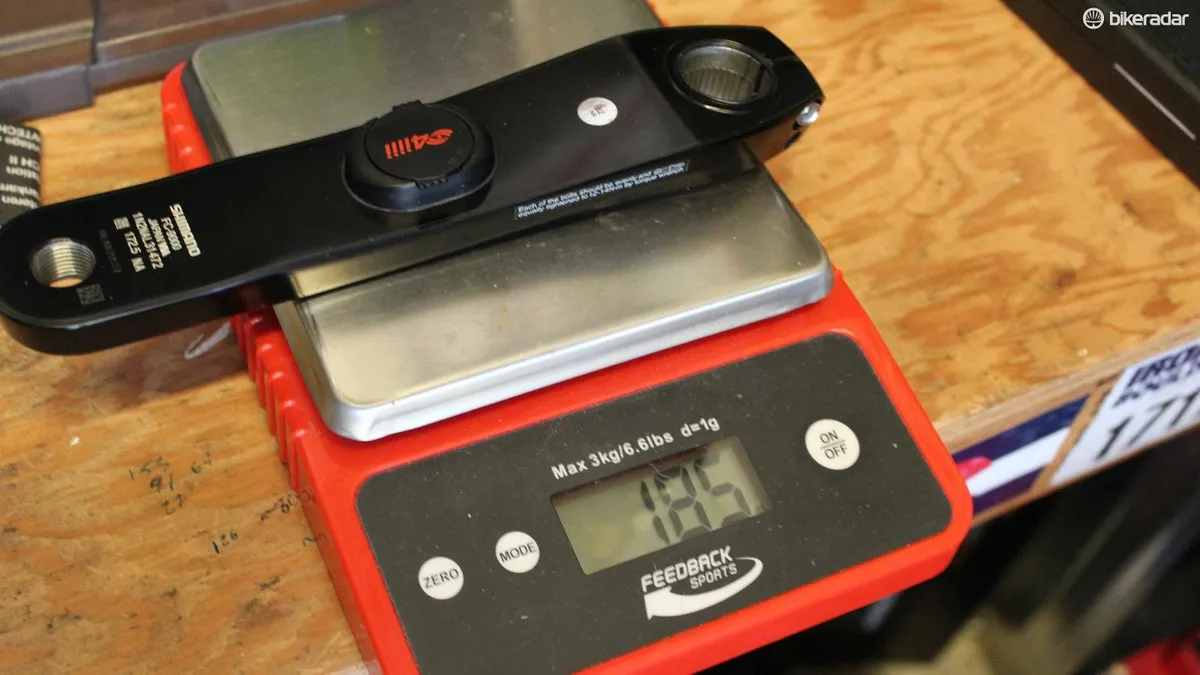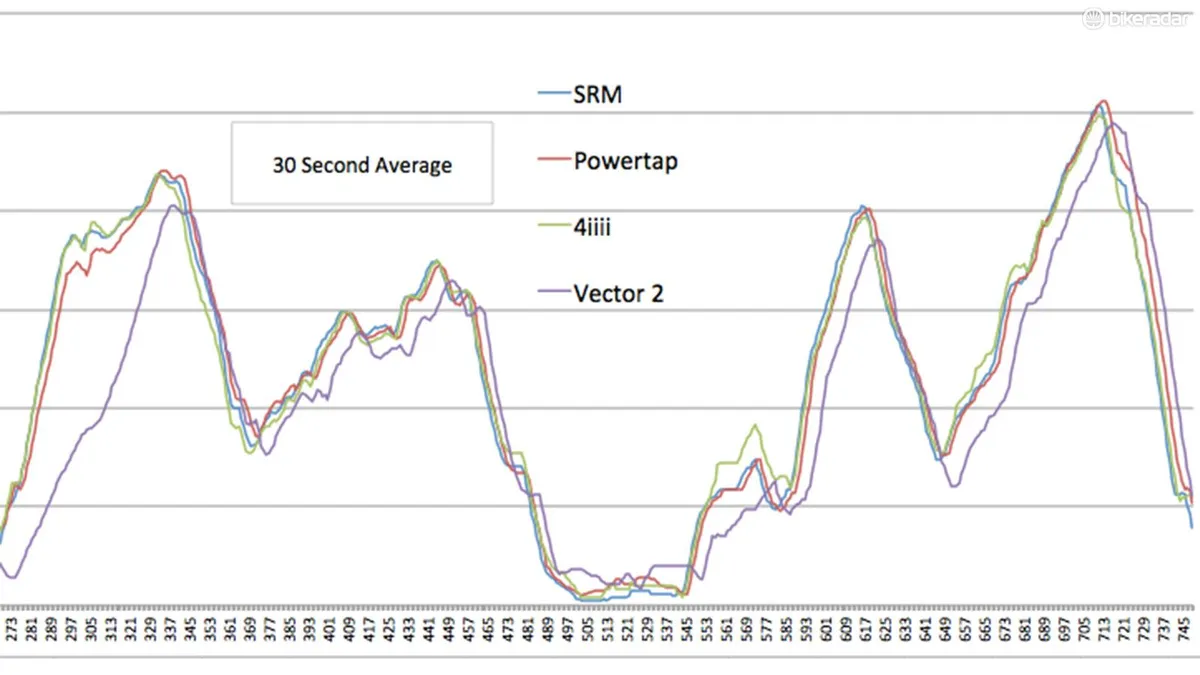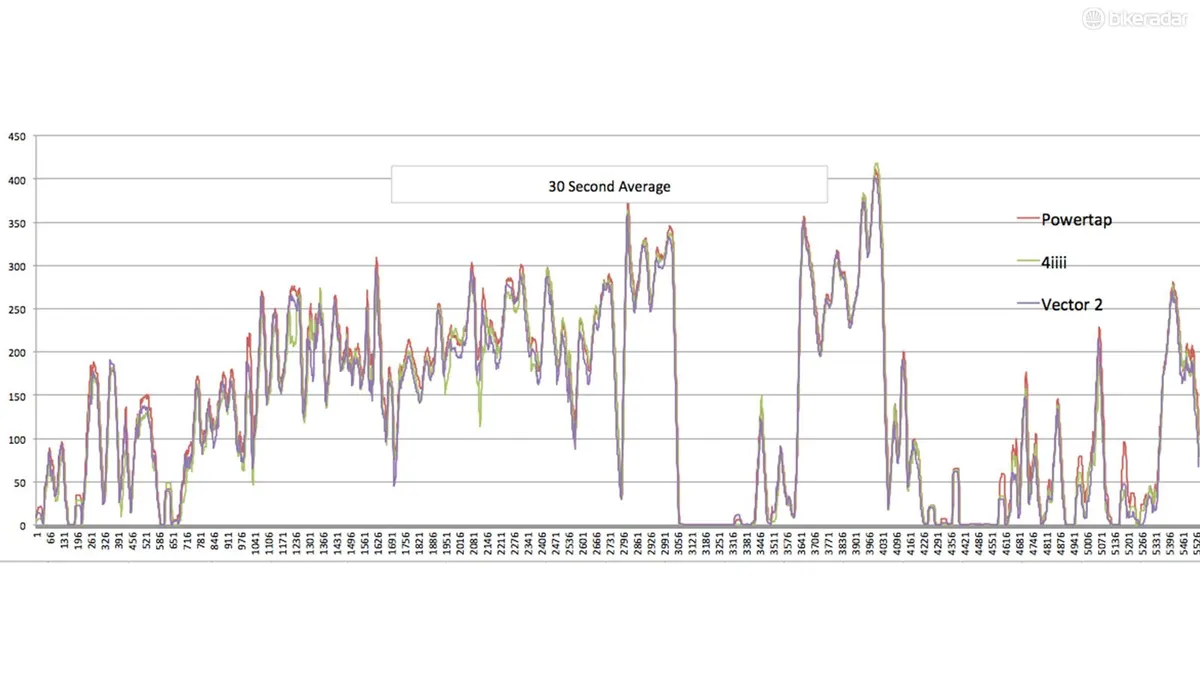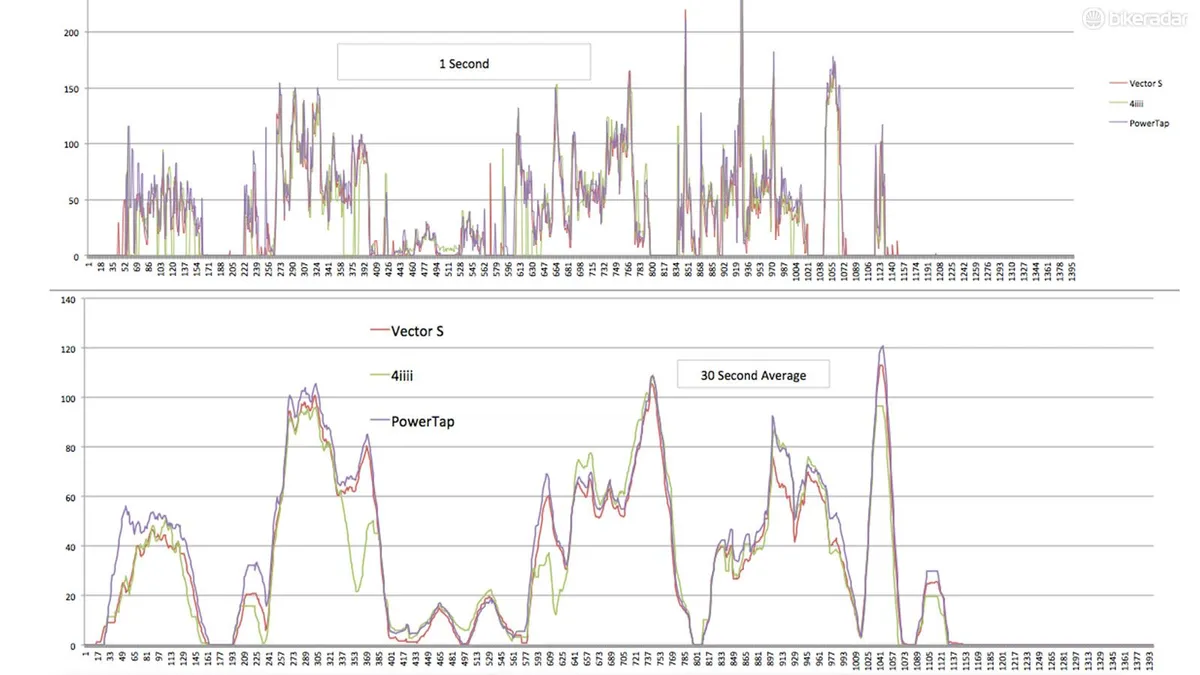You can buy 4iiii Precision power meters in two ways: as a new left crank with the power meter installed, or, for less money, you can send the Canadian tech firm your left crank and they will install a meter and ship it back to you in a claimed 1-2 weeks.
- Left-side power meters: Stages vs Garmin Vector S (tested against SRM and Powertap)
- Best power meters of 2016
- 4iiii announces 9g, 3D power meter, the Precision 2.0
I tested the already-installed 'Ride Ready' option on a Shimano Dura-Ace 9000 crank against two and three other meters simultaneously for 10 rides and found the accuracy to be good, considering the inherent limitations of a left-only meter. On two rides the ANT+ signal dropped out a number of times for 2-3 seconds, but on the whole I found the Precision to be a decent tool for the price.
Left-only and lightweight
4iiii claims its meter adds a mere 9g to the left crank arm. You can buy the meter on Shimano 105, Ultegra and Dura-Ace road arms, as well as XT and XTR mountain arms. We weighed our test 172.5mm crank to be 10g more than a stock Dura-Ace arm, also in 172.5. Whether 9 or 10g, the thing is so light you won't notice it.
Functionally it works similarly to the Stages left-only meter that preceded it on the market: it measures your wattage at the left crank and doubles that number for your total power, which it relays on either ANT+ or Bluetooth to any compatible cycling computer or smartphone.
So is this left-only power meter accurate? In my testing, I found the answer to be yes, mostly. I have found that for tempo efforts and above, my left/right balance is usually between 50/50 and 49/51. At easier, just-toodling-along paces, the left/right balance can vary more. Cycling coaches say this is the case for most people. For me, I'm not really concerned with exact wattage numbers when doing an easy ride or recovery between efforts; I am interest in accuracy when doing intervals. For this purpose, I found the 4iiii Precision to be a good training tool for the price.
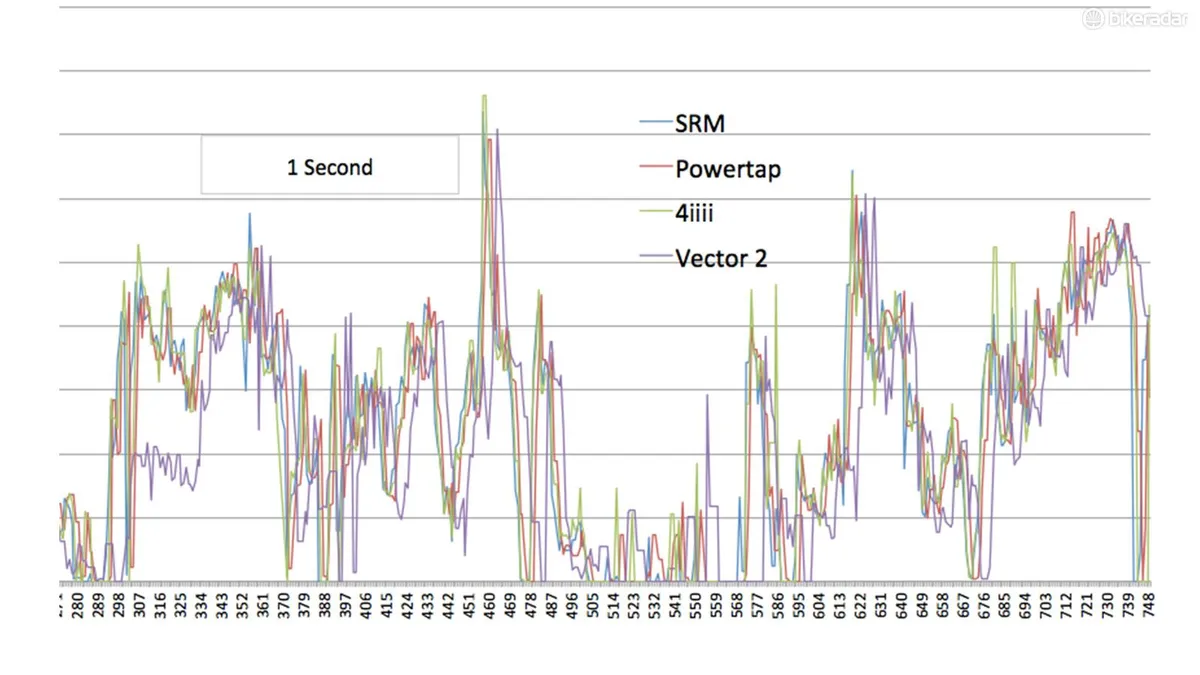
I ran the 4iiii Precision alongside an SRM and a PowerTap, which have tracked closely to each other for years and are the closest thing I have to a gold standard for testing Shimano crank-based meters, plus a set of Garmin Vector pedal-based power meters, for left-right reference. (Unfortunately the SRM battery gave out partway through testing and, revealing a flaw of the very expensive unit, required returning to the manufacturer for recharging. So, some of the charts here show only PowerTap and not SRM.)
Data comparison vs. PowerTap and others
The 4iiii Precision generally did well compared to the PowerTap, with seven of the 10 recorded rides tracking within 1-3% for average power. The other three rides varied by as much as 16%. Some of this could be attributed to left/right imbalance, and some could be attributed to the ANT+ signal dropping out for a few seconds on two of those rides.
4iiii Precision product manager Emma Bedard said that the dual ANT+/Bluetooth radio chip that 4iiii and other companies use for wireless transmission can sometimes drop out when broadcasting on ANT+ and the user has a smartphone with Bluetooth switched on.
I've experienced ANT+ signals dropping out on several other products, from heart-rate straps to other power meters, including the venerable SRM. Looking at the graph below and in the gallery above, you can see how the signal drops show up in the green line for the 4iiii 1-second chart, and are reflected as lower 30-second average power for those same time periods.
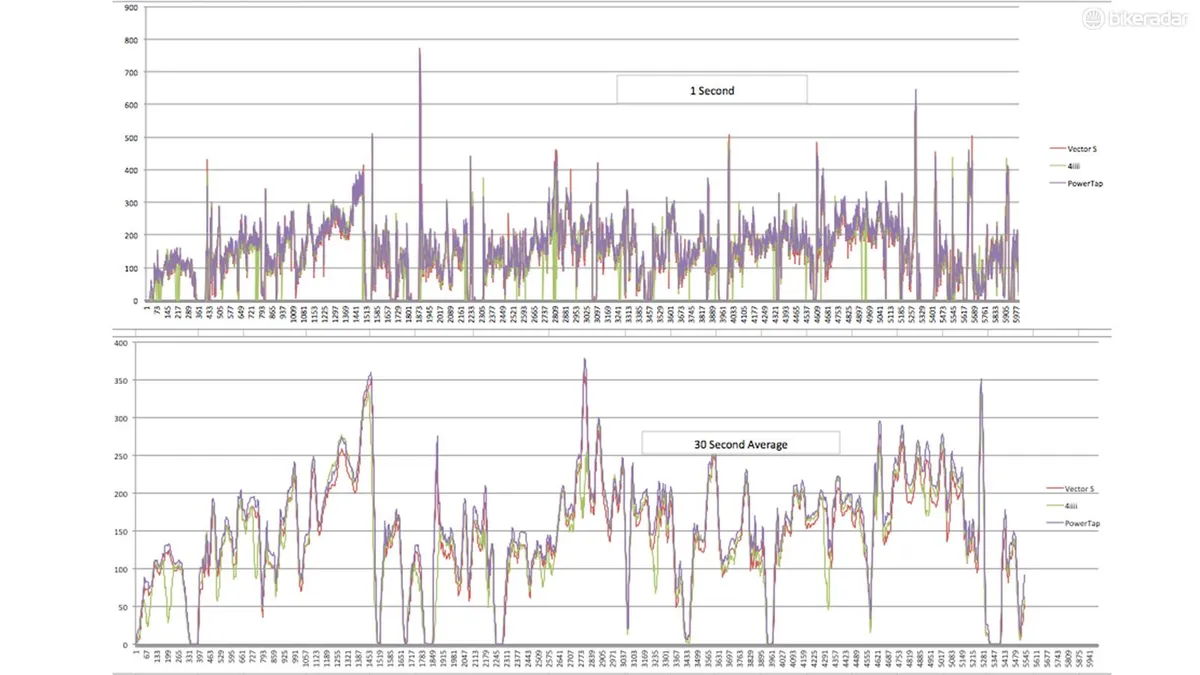
When testing power meters I overlay the 1-second and 30-second data to get both the forest and the tree view. I'm not too worried about one meter reading slightly higher than another or having a slight lag, but I do worry when one meter diverges greatly from the trends that the other meters show. In my experience, for example, Garmin Vector pedals are sometimes good and track well against SRM, PowerTap and Quarq, but then sometimes the data just wanders for no explicable reason.
Durability and compatibility
Given the water-entry problems that many of the early Stages meters faced with the battery housing, I tried to abuse the 4iiii housing by blasting it with a powerwasher, and using various types of sudsy solvents. It held out water without issue. (The same can't be said for one of the Garmin Vector 2 pods, which popped open like clamshell after a sudsy wash. This didn't affect measurement, but did require some duct tape...)
The unit wakes up quickly and pairs easily with standard head units like Garmin Edge computers. With Bluetooth, you can pair it to your smartphone for use with apps or for updating the firmware.
The 4iiii Precision is compatible with virtually all road bikes and most time trial/triathlon bikes. It does add 8mm of width to the crank, though; you can check whether it will fit your bike by sliding a AAA battery in between the left crank and the chainstay. For comparison, a Pioneer left meter adds 9mm and a Stages meter adds 7mm.
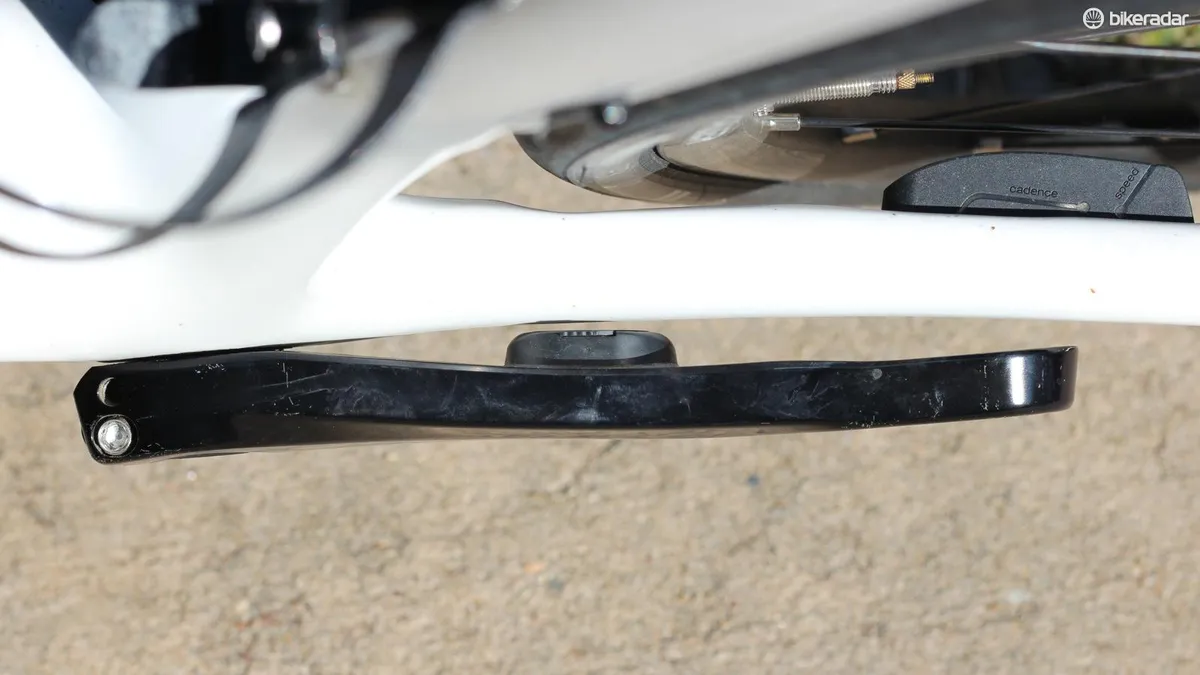
Also consider
Stages Dura-Ace power meter
When it launched, Stages was unique for being a left-side-only crank based meter. This design makes it more affordable, less complex and easier to fit. Power is measured with strain gauges factory-bonded to a left crank, doubled and then sent to a head unit via ANT+ to a computer or Bluetooth to a smartphone app. The new housing has addressed the water-seepage issue that plagued some of the initial units.
Pioneer single- and dual-sided power meters
Pioneer offers a unique power meter configuration: the dual-sided meter can be split into two functional one-sided meters. Further, when used as a dual-sided meter, Pioneer can give you what the company calls force vector measurements, showing where and in what direction power is being applied at 12 points along the pedal stroke. More pertinent to the 4iiii Precision, Pioneer is selling its left-sided meter for US$629, with the option to upgrade to the dual-side down the road.
